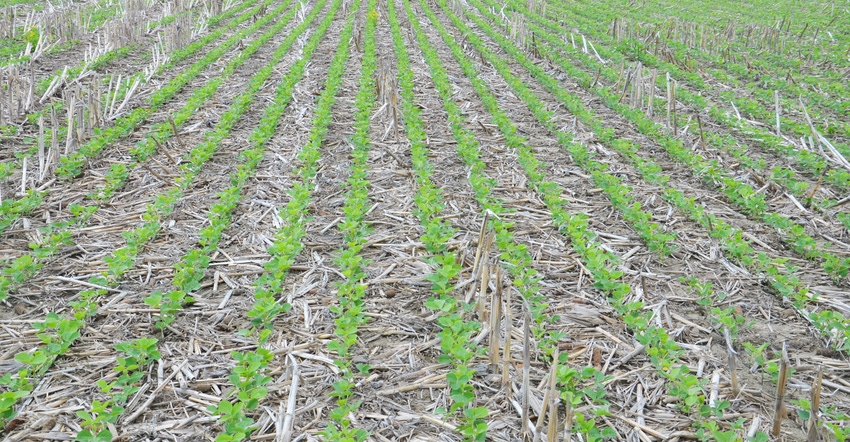October 29, 2018

I dropped soybean seeding rate to 140,000 in 15-inch rows in 2018, and farm yield averaged 59 bushels per acre, above my long-term average. I hear about high yields under 100,000 plants per acre. How low can I go to save on seed costs?
The Indiana certified crop adviser panel answering this question includes Andy Like, Syngenta sales rep, Vincennes; Jeff Nagel, agronomist, Ceres Solutions, Lafayette; and Darrell Shemwell, agronomist, Posey County Co-op, Poseyville.
Like: The answer depends on many factors. High-yielding, heavy soils produce a bigger, bushier plant that will lend itself well to low populations like 100,000 plants per acre. Heavily eroded, thin woodland soils may need a higher population, such as 140,000 plants per acre or more, to reach canopy quickly. Also, stand establishment comes into play. Targeting low planting population will more quickly trigger replanting if emergence is poor. Decide on a population depending on planting date, field conditions and productivity of the soil.
Nagel: A final harvest population of 100,000 to 125,000 seems to be where most research suggests soybeans achieve near-maximum yields. Seeding rates need to be higher than desired harvest populations to achieve adequate stands. Consider these six factors:
1. Field characteristics and soil type. Higher seeding rates will likely be needed on lower organic-matter timber soils with drainage concerns compared to reasonably well-drained fields with 3% to 5% organic matter.
2. Tillage system. Seeding rates can be lowered on fields that have less residue, and may need to be increased in conservation tillage systems and when planting into cover crops.
3. Planting date. Planting early may carry more emergence risk, but we’ve seen early planting into warm stretches where emergence is very favorable. Assess soil temperatures and projected weather forecasts.
4. Soybean variety. Is the variety short and therefore needs higher rates, or is it taller and might lodge so populations need to be managed on the lower side? Is white mold a concern?
5. Seed treatments. Several high-quality seed treatments are available today. Fungicidal seed treatments deliver higher early-season plant establishment, allowing for some reduction in seeding rates.
6. Weed control. With some “driver” glyphosate-resistant weeds becoming more widespread, an early, robust crop canopy becomes more critical for season-long weed control. Waterhemp will continue to germinate in-season and will successfully establish given sunlight. Reducing seeding rates or planting in 30-inch rows could open the door for late-season weeds.
Shemwell: The past two years I’ve seen soybeans planted at 140,000 and 125,000 seeds per acre yield 92 and 107 bushels per acre, respectively. High yields can be achieved at lower seeding rates. There are years that the best economical yield may be achieved at 90,000 seeds per acre, and other years that might be 125,000. Soybeans are very forgiving. You can plant them into very different field conditions and they will come up.
Consider your comfort zone, too. If you want to see a beautiful green carpet of soybeans after emergence, lower seeding rates aren’t for you. If you wonder if you should replant, the population is probably about right. In this case, check your populations and average stand count.
Most of my growers lower seed rates because of better yields and less lodging. Our normal seeding rates are 125,000 to 165,000 seeds per acre in 15-inch rows. If a grower wants to experiment with 100,000 seeds per acre, I would tell him to go for it and recommend the best variety for that scenario.
You May Also Like




